Tartan? Plaid? What's the Difference?
Posted by The Celtic Croft on Oct 16th 2020
One Tartan
Two Tartan
Red Tartan
Blue Tartan
Tartan, plaid, checked—is there much of a difference? Yes, but it has its nuance. All tartans are plaids, but not all plaids are tartans. Does that clear it up for you? Likely not.
Look at our tartans and see if you have a guess.
Let’s start with what is the same. Both are a pattern with horizontal and vertical lines that meet at a 90° angle. The result is a familiar grid pattern. The tartan has a more intricate motif with more threads than a typical plaid pattern, while a checked plaid is generally two colors in an alternating pattern.
The central differentiation of a tartan is it is assigned to a particular clan and holds its history. Let’s explore the origins of tartans.
History and Origins of Tartans
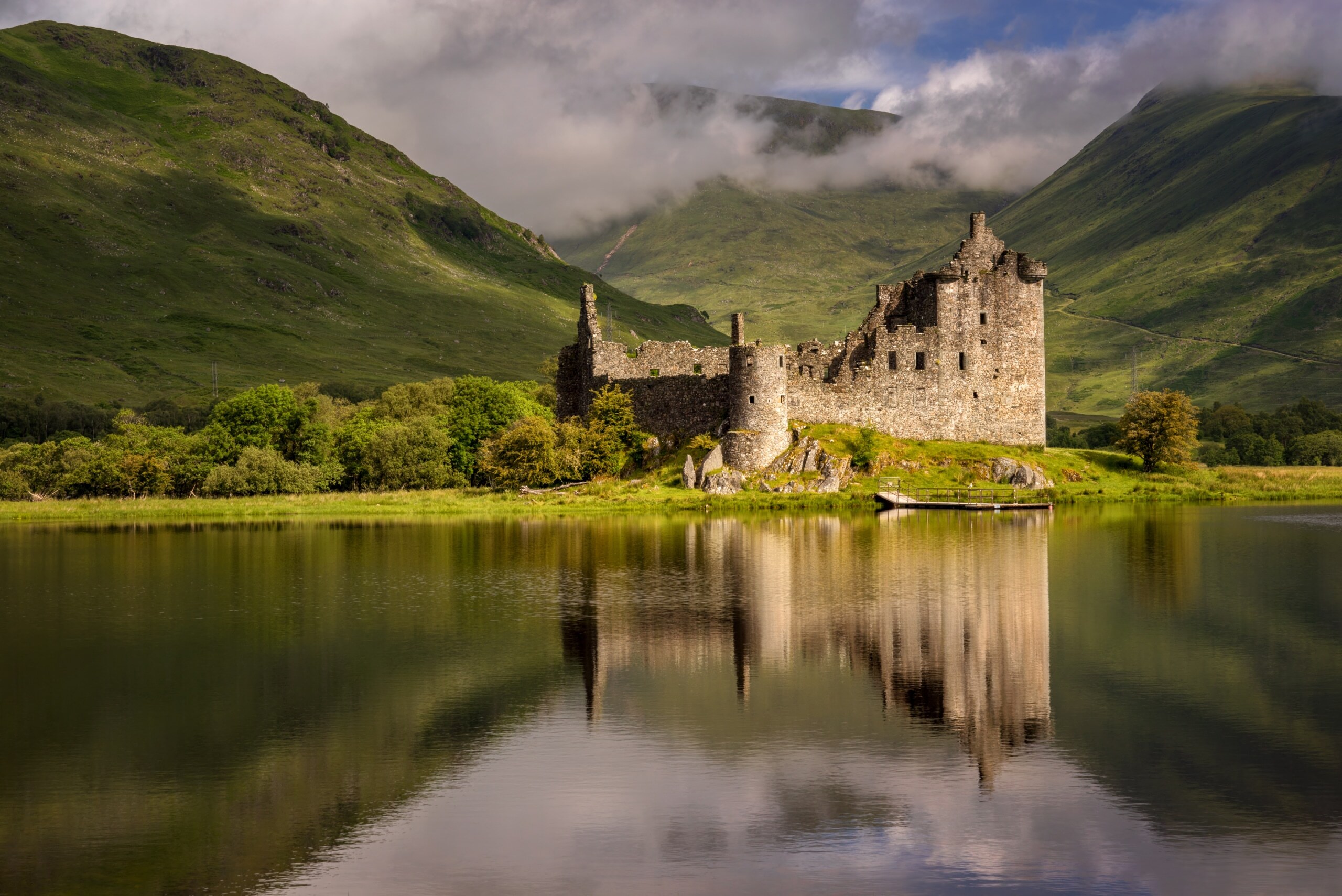
One can't help but think of tartan when you think about Scottish history. The Celts had been using checked and plaid materials for many centuries. According to Scotland.org, the tartan materializes in the fifth century with the arrival of the Scoti tribe.
The Scoti tribe is the origins of the Celtic land now known as Scotland, and they also brought the tartan. At that time, it was a simple cloth pattern. Once the clans started the adoption of designs, the intricate weave emerged.
The word tartan origins, seemingly, are a derivation of the French word tartaine, meaning checked cloth. A German woodcut made in 1631 shows Highland mercenaries (Gustavus Adolphus’ army) in tartan kilts.
Milestones of Tartans

Fans of Outlander will definitely know the Battle of Culloden of 1746. The rebellion ends and follows with horrific genocide in the Highlands. Charles Edward Stuart (known as the Bonnie Prince Charlie) and his Jacobite forces of Highlanders versus the Duke of Cumberland's Government. Scottish History Online tells us that the Jacobite army’s regiments were by Clan and uniformed in their tartans.
In the heat of battle, distinguishing an ally from an enemy was no easy task, with all the tartans' varieties. Hats with a ribbon or a plant sprig, symbolizing his Clan, also helped identify the regiments.
After Culloden, where the Duke’s army won, and the subsequent Highlander genocide, the Government passed “The Disarming Act” to dismantle the Clan System. Wearing tartan became a punishable offense. The ban applied to common Highlander men. Elite gentlemen, any women, and Highlanders in a Government regiment received an exemption.
This ban was in effect for 36 years until the year 1782.
Making of a Tartan
Each settlement in the Highlands had its own weaver, generally a man. He crafted a tartan, and those in his community would wear it as their District Tartan.
These communities were much more than communities. They became family. The name of the tartan pattern often was the name of the weaver who created it.
Do Colors Mean Anything?
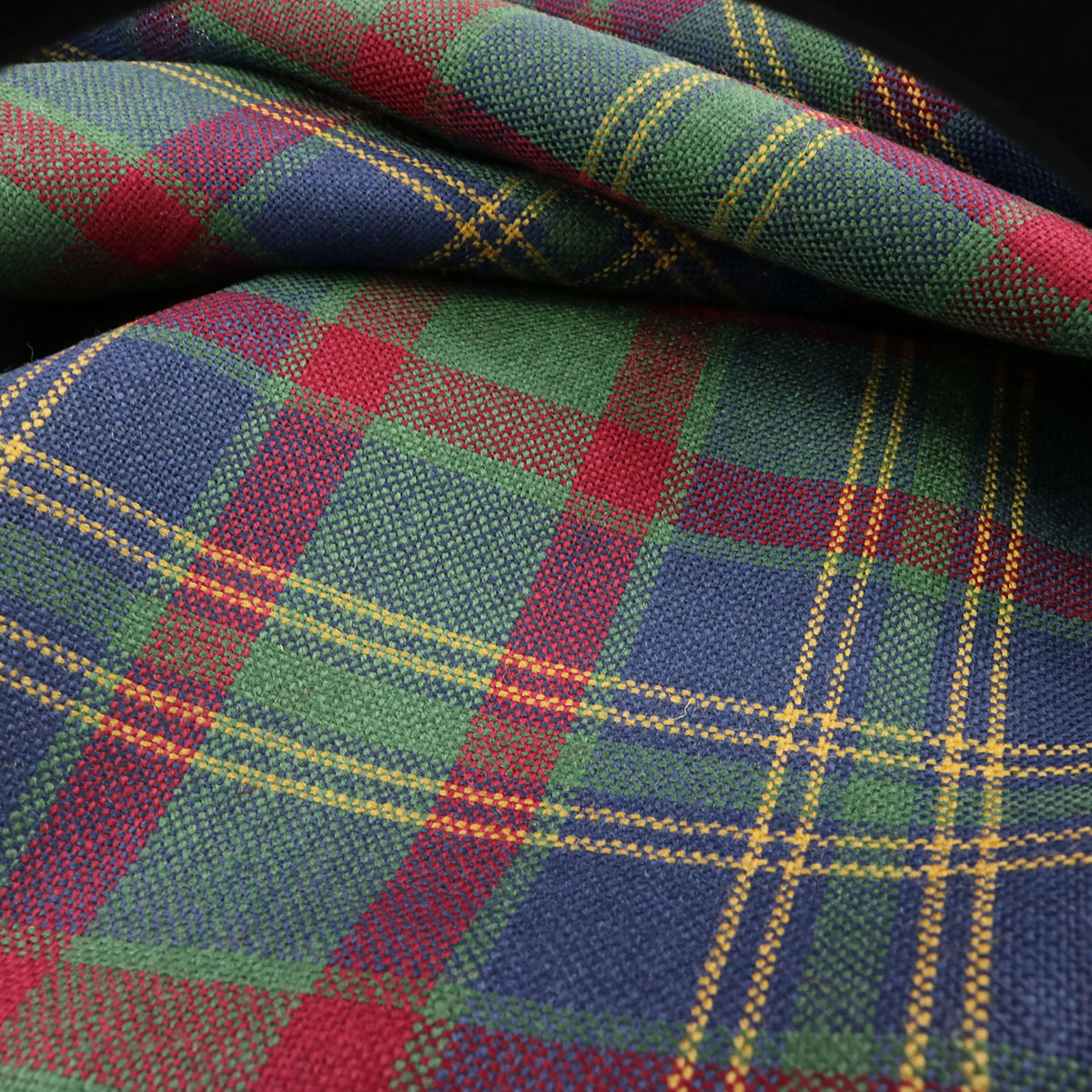
The colors would come from the dyes available to the weaver. The shades came from the local flora and fauna. The coastal areas were more greens, while the inlands were more of the browns, oranges, and yellows. Some wealthier weavers would import exotic dyes made from madder, cochineal, woad, and indigo.
According to Historic UK, weavers agonized over the tartan patterns by identifying each thread color on to a piece of wood known as a "maide dalbh," or pattern stick.
Sir Water Scott had a plan. In 1822 King George IV had a meeting with the Highland Chiefs. Sir Scott asked each chief to wear their Clan Tartans at all the events. While some refused, it was a huge success. Families renewed their own wearing of tartans, and other Highlander hating people who did not have a tartan quickly had one designed.
Queen Victoria and Prince Albert became infatuated with Balmoral, the royal palace, in Deeside in Scotland. They adored everything about the Highlanders. Prince Albert subsequently designed the now world—famous Balmoral tartan, which became the main decoration of all their rooms.
Scottish Tartans Today
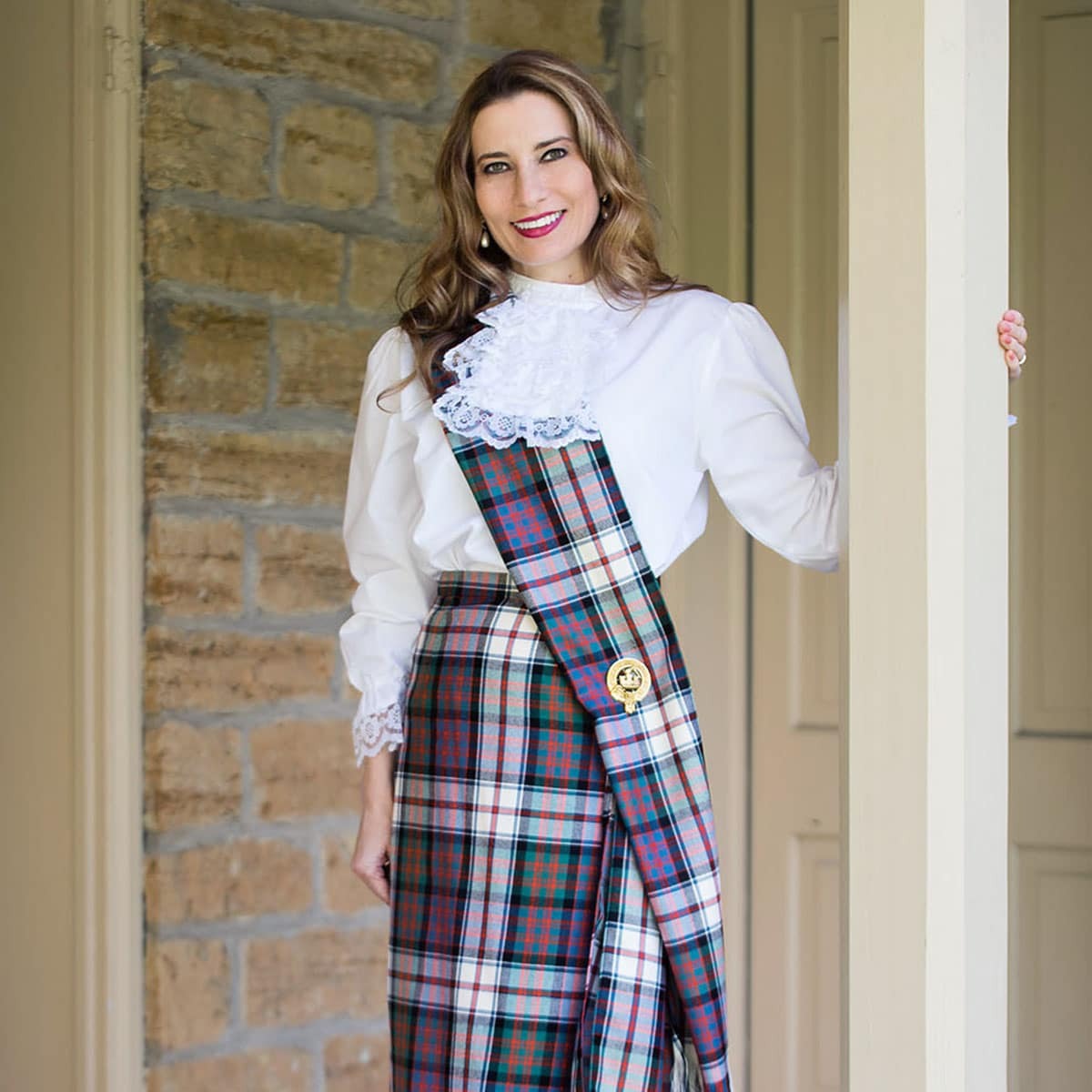
So many tartans! Need to know your Clan? We have fantastic resources listed in our post What’s Your Scottish Clan? Then hop over to our Clans and Tartans section to pick out your patterns. And you definitely need one of our kilts to wear to festivals, parties, and special occasions! Our beautiful jewelry will let everyone know your Celtic heritage is strong.
Trace the origin of your surname to your ancestral Clan. Once discovered, this affords you the right to wear that unique tartan.
Scottish Register of Tartans
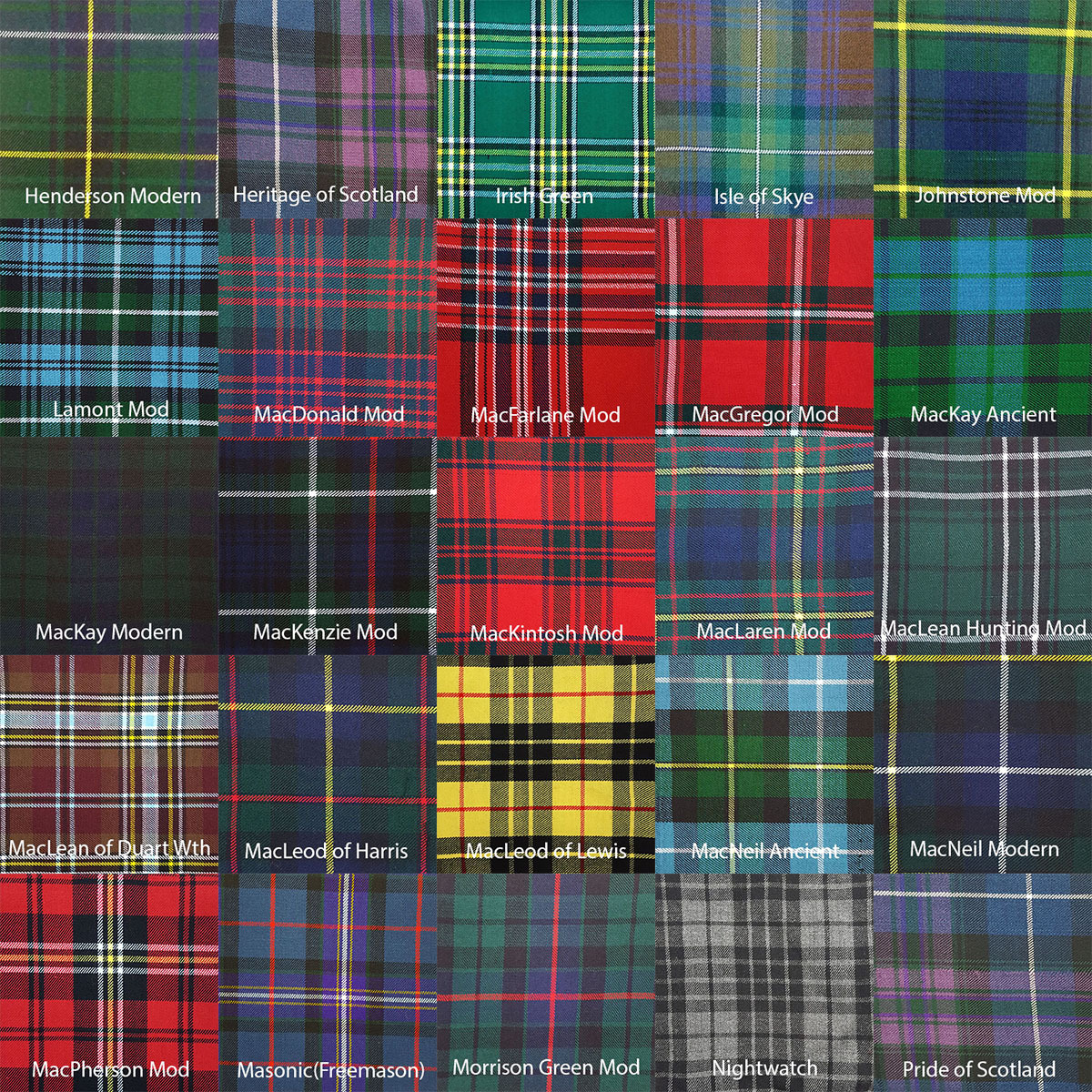
Scottish Parliament created a Register of Tartans in 2009. On Scotland.org, Jim Mather, the Minister for Enterprise, Energy, and Tourism is quoted saying, "The Register will make tartan more accessible than ever before. It means people across the world will be able to use the Register as an online resource to research or design their own family tartan and have it woven in Scotland—the spiritual home of tartan."
The Keeper of the Records of Scotland updates the registry. Explore the registry at Scotland’s National Archives in Edinburgh. Here, you will find hordes of information on tartan patterns and history. This also gives anyone who wants to develop a tartan and register it a chance to do so!
Wear Your Tartan
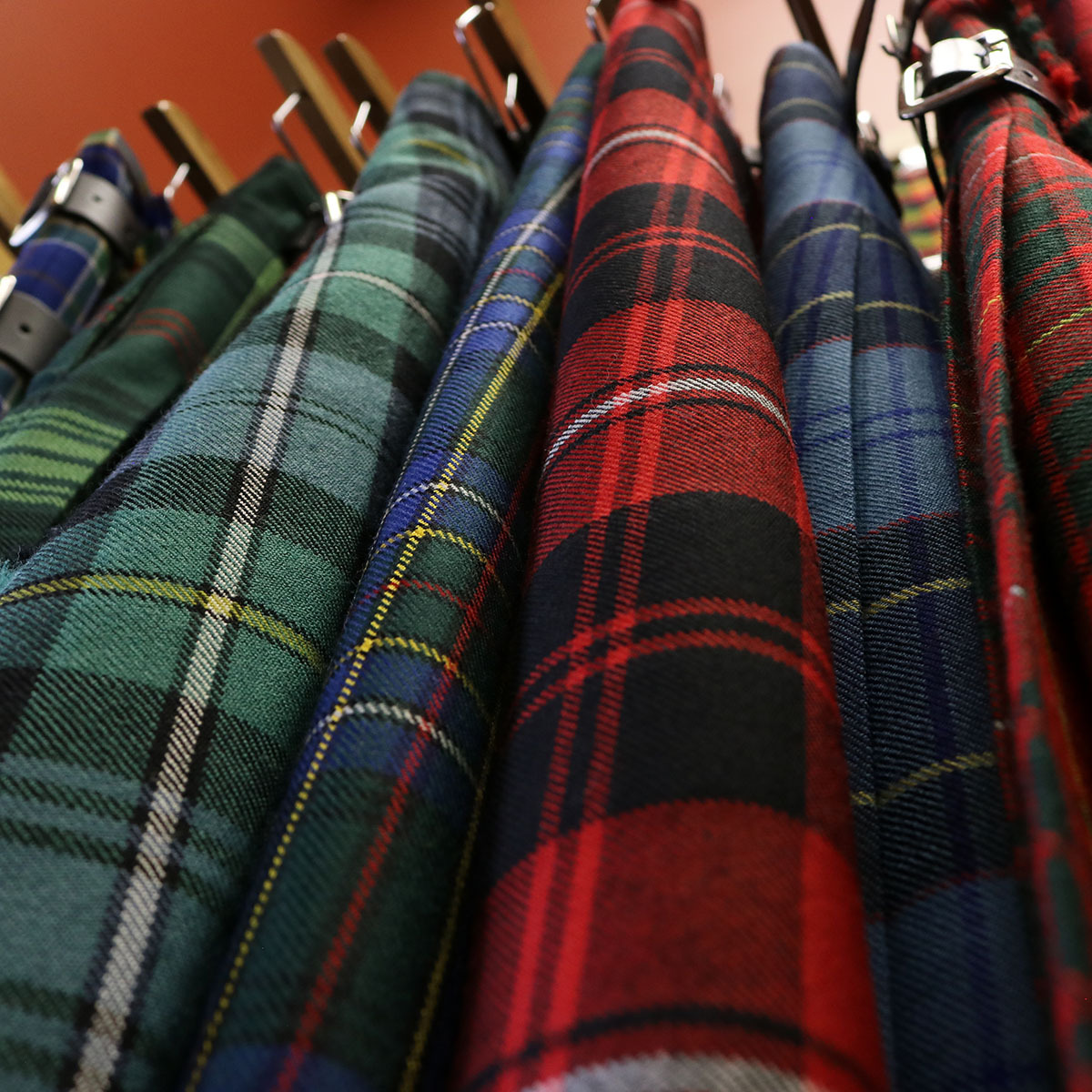
The success of Outlander, and seeing Ewan McGregor and Samuel L Jackson in their kilts have contributed to the popularity of wearing tartan. Want to look like the virile Jamie or the stunning Claire Fraser? We have an entire Outlander collection. And we think you will be looking dashing!
GENTLEMEN—THE TARTAN
Here's to it!
The fighting sheen of it,
The yellow, the green of it,
The white, the blue of it,
The swing, the hue of it,
The dark, the red of it,
Every thread of it.
The fair have sighed for it,
The brave have died for it,
Foemen sought for it,
Heroes fought for it.
Honour the name of it,
Drink to the fame of it —
THE TARTAN.
(Murdoch Maclean)

